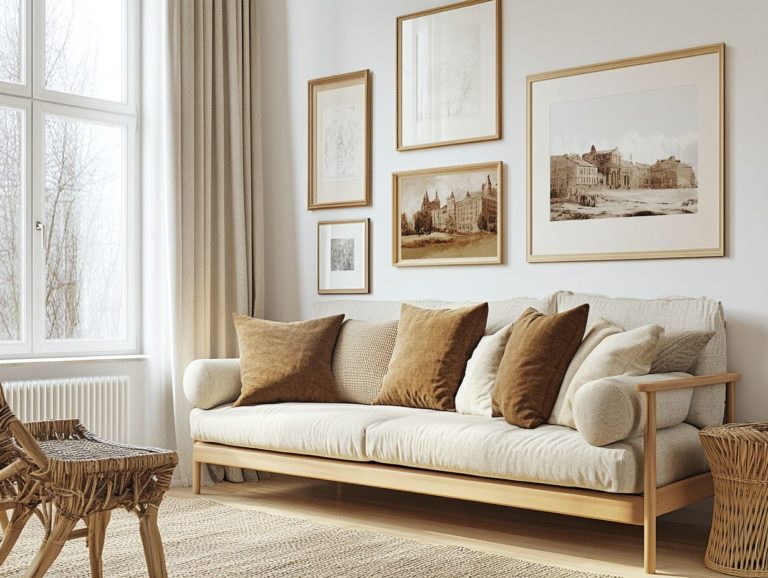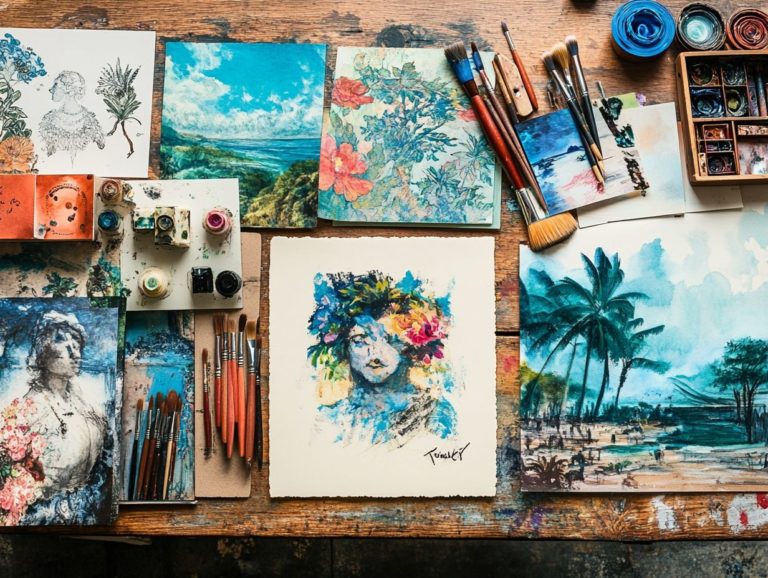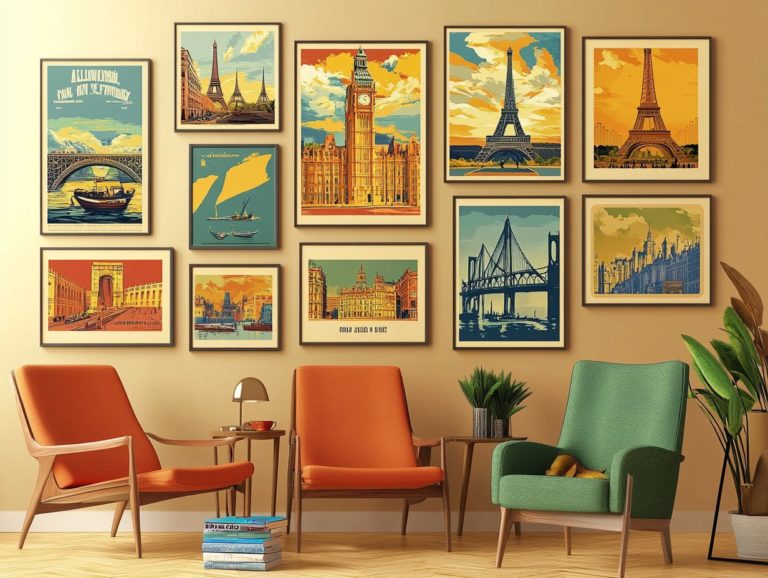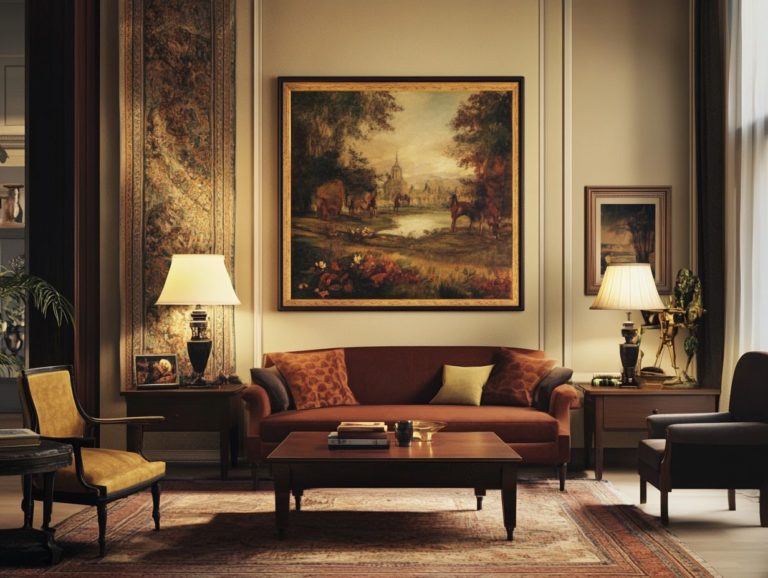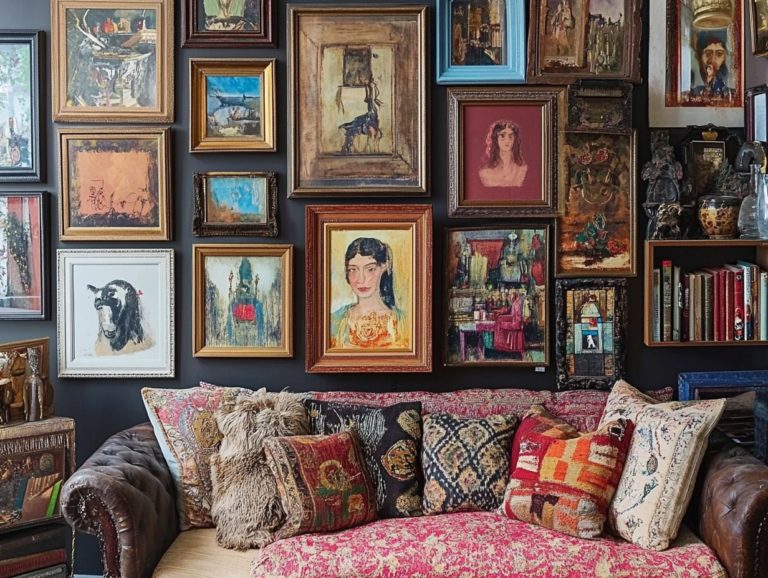The History of Vintage Wall Art: An Overview
Vintage wall art transcends mere decoration; it serves as a profound reflection of cultural heritage and artistic evolution.
From the earliest cave paintings to the exquisite designs of the Art Nouveau and Art Deco movements, your journey through vintage art reveals the shifting tastes and technologies that have shaped different eras.
This exploration delves into popular styles and themes. It examines the impact of technology on art reproduction and offers practical tips for collecting and preserving these timeless treasures.
Uncover the beauty of vintage wall art; it not only possesses aesthetic charm but also carries a rich narrative, eagerly waiting to be appreciated.
Contents
Key Takeaways:

- Vintage wall art has come a long way, from cave paintings to modern reproductions, reflecting the changing styles and themes of different eras.
- Popular styles and themes of vintage wall art include Art Nouveau, Art Deco, and Mid-Century Modern, each with unique characteristics and influence on the art world.
- Technology has greatly impacted the production and preservation of vintage wall art, making it more accessible and increasing its value and appreciation in the art market.
The Evolution of Vintage Wall Art
The evolution of vintage wall art presents a captivating narrative of human creativity. It traces its origins from primitive cave paintings to the sophisticated vintage pieces you see today.
This journey encompasses a diverse array of artistic movements, including those of ancient Greece. It highlights the cultural heritage that vintage art embodies.
As you delve into the development of artistic expression through important historical events, you unravel the intricate influences that have shaped the way art looks and feels over time of vintage wall art. This reveals its enduring significance across generations.
From Cave Paintings to Modern Reproductions
The journey from cave paintings to modern reproductions reveals a captivating transformation in artistic expression. It showcases the evolution of both techniques and themes.
These ancient artworks, etched onto stone walls, served not merely as a means of communication but as a vivid narrative of human experience, survival, and belief systems.
What stories do these vintage pieces tell? Each stroke, crafted with natural pigments, tells a story rich in cultural significance, echoing traditions that still resonate today. Understanding the role of vintage wall art in interior design can further enhance these narratives.
As modern reproductions surface, artists like you draw inspiration from the past while embracing advanced technologies and diverse materials. This shift not only honors the craftsmanship of those who came before but also illuminates the intricate relationship between historical context and contemporary practices.
It s a powerful reminder of how these visual stories continue to influence and shape the artistic landscapes of today.
Popular Styles and Themes of Vintage Wall Art
Vintage wall art invites you into a world of diverse styles and themes, each imbued with its own unique charm and cultural significance.
From the intricate designs of Art Nouveau to the striking lines of Art Deco and the vibrant aesthetics of mid-century modern pieces, these artistic movements speak volumes about the trends of their eras.
They evoke a nostalgic allure that captivates collectors and enthusiasts alike. How can these artworks, as explored in the psychology behind vintage wall art, turn any space into a conversation starter?
Art Nouveau, Art Deco, and Mid-Century Modern
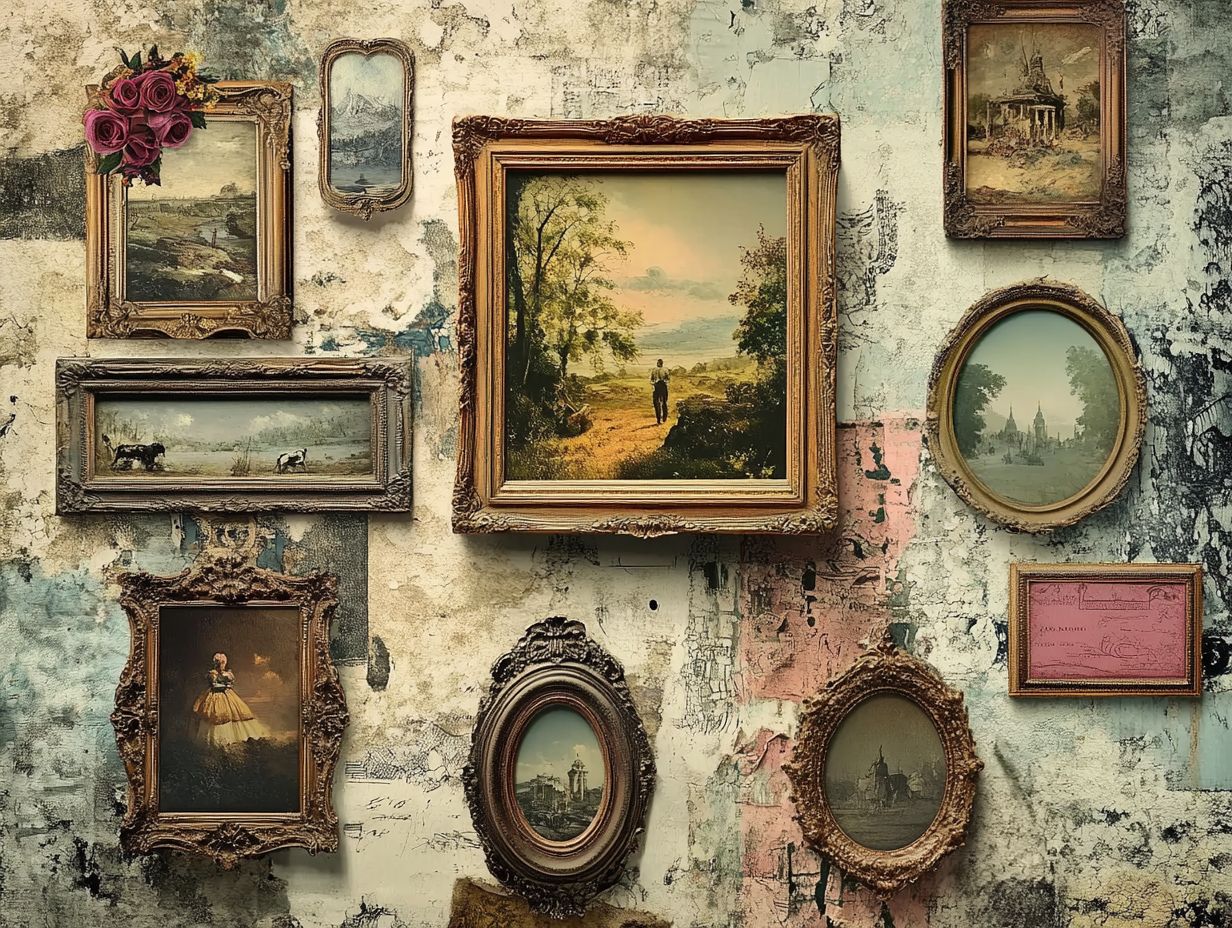
Art Nouveau, Art Deco, and mid-century modern are key styles in vintage wall art. Each style has its own unique decorative elements.
These movements capture the socio-political and technological changes that shaped their cultures. Art Nouveau features organic forms and intricate patterns that harmonize with nature.
In contrast, Art Deco showcases bold geometric shapes and luxurious materials. This style represents modernity and progress.
Mid-century modern focuses on simplicity and functionalism, reflecting a post-war world eager for innovation.
The return of these styles has energized contemporary artists and collectors. This has led to a vibrant market for vintage wall art celebrating these historical movements.
The Influence of Technology on Vintage Wall Art
Technology has transformed vintage wall art, reshaping everything from creation methods to distribution channels.
Advancements in printing and reproduction techniques make timeless artworks more accessible. Collectors now have exciting ways to discover and acquire these pieces.
Advancements in Printing and Reproduction
New printing technologies have changed vintage wall art, allowing you to enjoy a level of precision and fidelity that captures the original artistic expression.
High-quality printing methods enable artists and collectors to recreate intricate details and vibrant colors. Gicl e printing, known for its high-quality inks and long-lasting paper, preserves fine art beautifully.
Lithography offers a unique texture that many collectors appreciate. This dedication to craftsmanship helps keep original works alive for future generations.
Collecting and Preserving Vintage Wall Art
Collecting vintage wall art requires appreciation for the art itself and knowledge of preservation techniques. Understanding these techniques is crucial for maintaining the art s integrity over time.
Recognizing the historical significance of these pieces enriches your collection. Engaging with art galleries and other collectors provides valuable insights into best practices.
Tips for Building a Collection
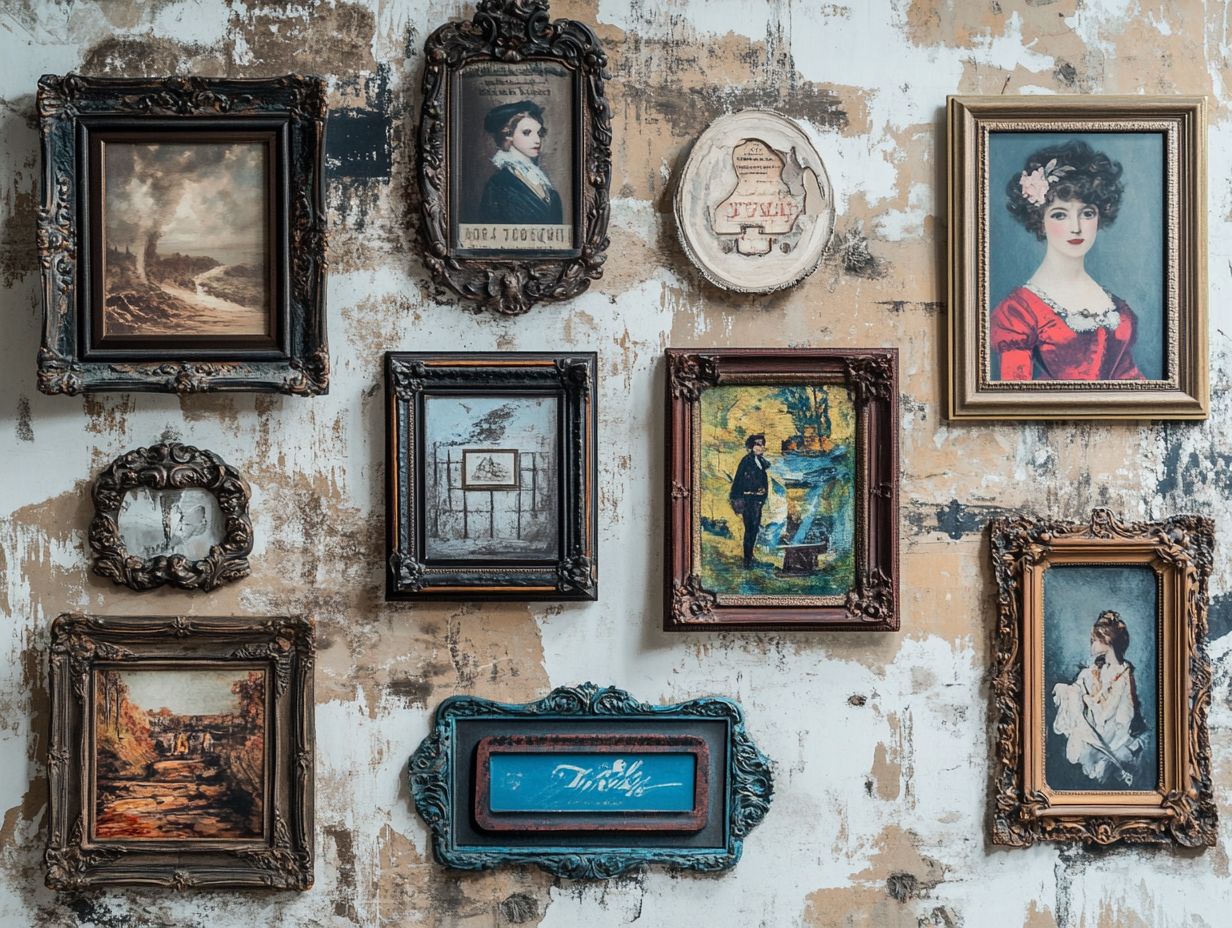
Building a collection of vintage wall art requires a keen eye. You should explore local flea markets, estate sales, and specialized galleries to find unique pieces.
Authenticity is key; genuine works hold greater value and tell a richer story. Joining community art initiatives helps you connect with fellow enthusiasts and talented artists.
To preserve your artworks, use acid-free materials for framing. Display them away from direct sunlight and regularly check their condition.
The Value and Appreciation of Vintage Wall Art
The value of vintage wall art comes from several factors. These include artistic merit, historical relevance, and cultural trends that resonate with collectors.
Understanding these elements helps deepen your appreciation for the unique qualities that define vintage pieces.
Factors that Affect the Value of Art
Key factors influencing vintage wall art include its historical significance and artistic merit. Trends in the art market can also change perceptions among collectors.
A painting by a renowned artist often commands higher prices due to its cultural relevance. Collecting trends can shift focus, driving demand in unexpected directions.
For instance, mid-century modern art has surged in popularity. Collectors eagerly seek pieces that capture its unique aesthetic, seeing remarkable value appreciation.
Frequently Asked Questions
What is vintage wall art?
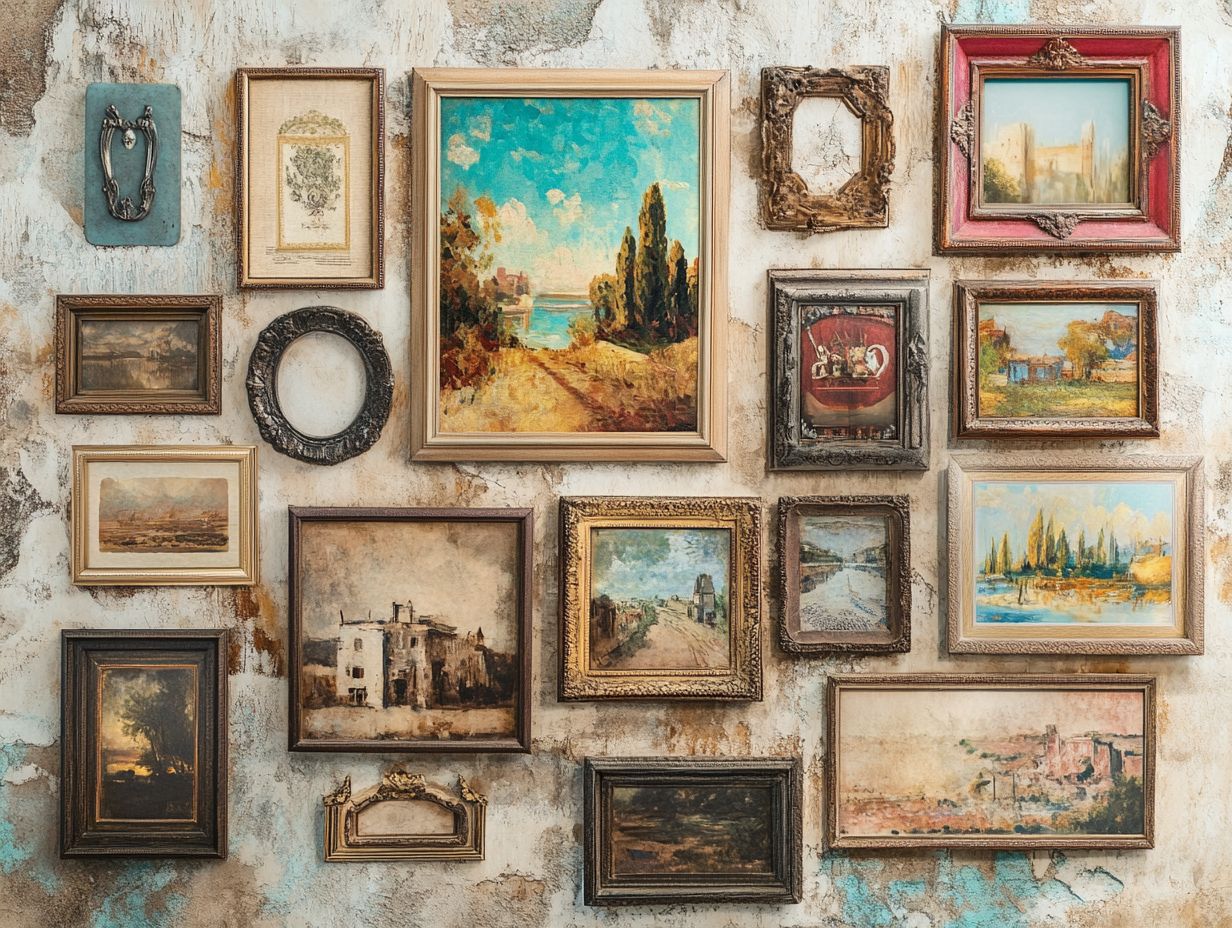
Vintage wall art includes any artwork created at least 20 years ago. This art often has a nostalgic or retro feel, including paintings, posters, and prints.
When did vintage wall art become popular?
It gained popularity in the late 1960s and early 1970s. People embraced nostalgia and retro styles, making it a lasting trend.
What are some common themes in vintage wall art?
Common themes involve nature, travel, advertising, and notable figures or events. These often reflect the era when the artwork was created.
How was vintage wall art created in the past?
In the past, vintage wall art was crafted through techniques like lithography, screen printing, and hand-painting. These methods required skill, making each piece distinct.
What makes vintage wall art valuable?
The value varies depending on artist, rarity, condition, and demand. Works from famous artists or with significant history can fetch high prices among collectors.
Why is vintage wall art still popular today?
It offers a unique nostalgic touch to home decor. People also appreciate it as a way to connect with history and enhance their living spaces.

